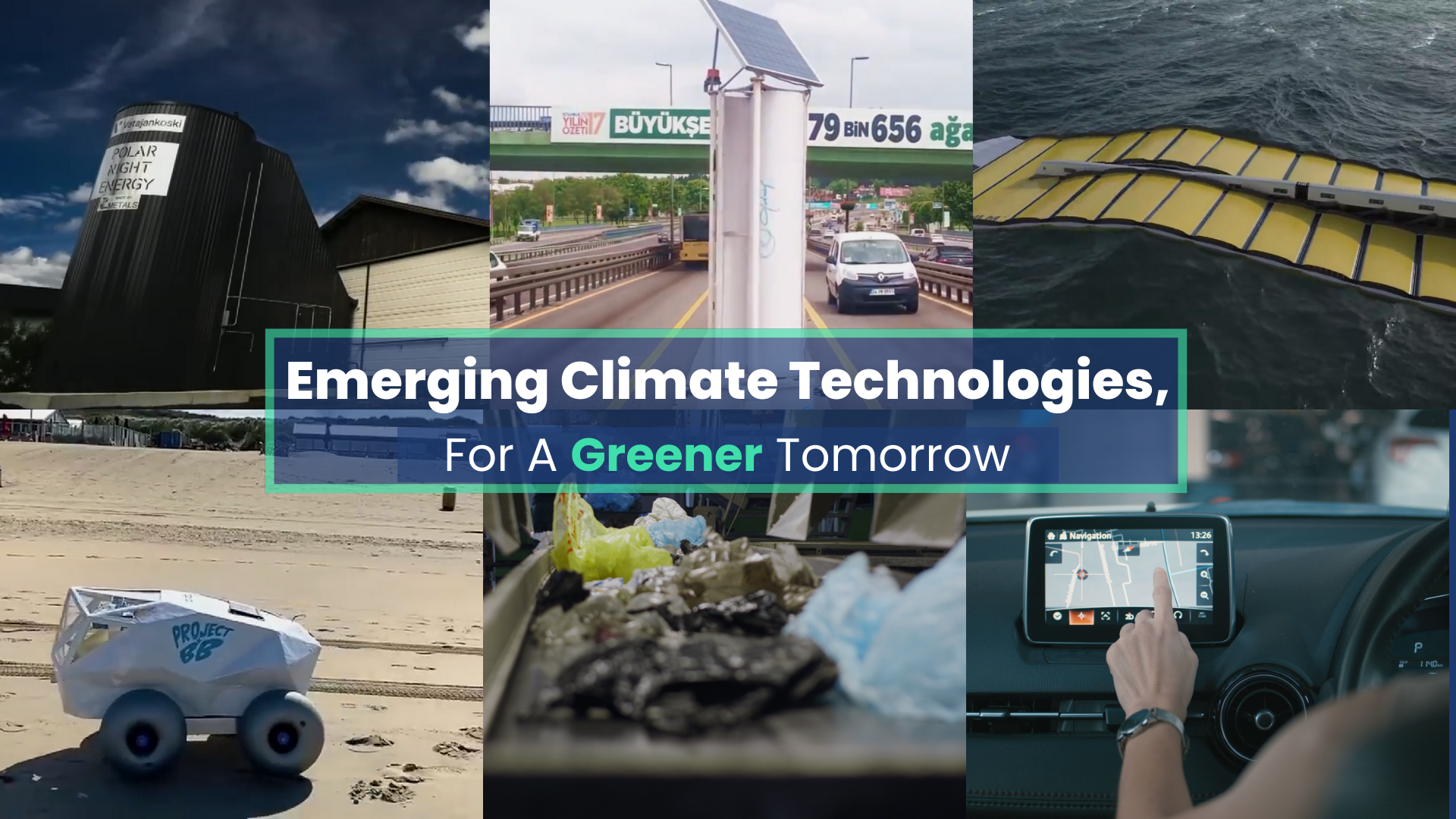A 1.5°C warmer earth! That's what we are heading towards in a couple of decades. It may not seem much but practically it means 4 times higher chances for an extreme heat event every 10 years, 70% degradation of coral reefs, rapid ice cap melting, higher tsunamis, unpredictable weather, extreme storms, ozone depletion and what not. The impacts of global warming are way more drastic and complicated than what we may assume as common folk. Scientific findings and data are already giving us a picture of how dramatically climate has changed over the last decade and how it may look in the coming ones.
The picture of the time ahead may look bleak and tarnished, but humans have always strived to be problem solvers, innovators, creative thinkers and technology developers pushing the boundaries of their own limitations. Technological marvels that man has created over the years are astonishing and those in the direction of a sustainable future look quite optimistic. Broadly classified as climate technologies, the very essence of these innovations is focused towards limiting current emission levels and to reverse the existing effects of climate change. To list a few, here are some emerging technologies that give a greener picture of our tomorrow:
- Sugar Plastics: Plastics have always been a major concern for environmentalists and climate technologists due to its wide range of utilities across households and industries along with being non-biodegradable. A solution to this widely used non eco-friendly material has come up by developing an amalgamation of sugars and carbon dioxide which when processed under controlled atmosphere can give us a plastic that is completely biodegradable. The class of materials also called as sugar plastics, which, apart from being biodegradable, are also non-toxic and hence environment friendly. Sugar plastics can find their applications in manufacturing and replacing all major petroleum based plastic raw materials in their respective industries.
- Enlil Wind Turbines: A tech enabled vertical wind turbine that is capable of harnessing wind energy from moving traffic is an innovation to look forward to. These vertical devices are placed along road dividers which have an average to high traffic frequency and they use specially designed blades to capture wind from the moving traffic. Apart from the basic function of working as a wind turbine, these devices are also paired with solar panels, along with a smart integrated system enabling them to measure CO2 emissions, traffic data management, along with connectivity features and an inbuilt Wi-Fi station. These devices once commercialised on a larger scale can be a game changer, being a huge source of renewable energy.
- Sand Battery: With the fundamental concept to store surplus energy, specifically employing electrical energy which is stored in the form of heat for future usage, sand batteries use sand or sand like materials for this purpose. It is a novel concept and has been recently materialised in Finland where excess electrical energy is used to heat up the sand in these batteries to 500°C or more and since sand and such materials have a lower capacity to dissipate heat to the surroundings, the battery can store this heat for months. The same heat is then used during energy deficits by connecting these batteries to a district heating network, helping heat residential and commercial buildings. Since, it's mostly fossil fuels that are used to derive heat energy during harsh winters, these batteries are a greener alternative for the same purpose with zero carbon output.
- Waveline Magnet: There are multiple devices working on the principle of energy conversion like dynamos, windmills and even electric irons, but harnessing the potential of ocean waves to generate electricity is quite unique. Waveline magnet is a device employed to use the rise and fall of ocean waves to produce electrical energy. It is composed of a series of flexible units made from recycled materials connected by a spine power system. The device is put in waters with high oceanic activities in order to utilise the mechanical energy transmitted from waves to the device and ultimately converting it to electricity. Estimating the global potential of this technology, a major chunk of the energy crises in the world today can be dealt with using the waveline magnets providing a reusable and sustainable energy source.
- Green Jet Fuel: Globally, the aviation industry contributes around 2% to the air pollution as it is highly energy centric and dependent on fossil fuels. However, recent developments towards making this massive industry sustainable has led researchers and scientists towards developing a sustainable fuel efficient enough to make jets fly. This fuel is solely made using 3 ingredients; sunlight, carbon dioxide and water vapours. The technology extracts water and carbon dioxide from the air followed by using solar energy to break down these into carbon monoxide and hydrogen. These gases are further processed to develop a syngas which can be converted to pure methanol using industrial catalysts. The production of this fuel has very low emissions compared to the commercial jet fuel productions reducing the overall environmental impact of this industry.
- Google Maps; Energy saving routes: Most prominent navigation system used across the globe is not limited to help users to navigate and reach destinations, but now, google maps can help commuters choose for the most energy efficient routes to their destinations. The technology is real time and will also let users choose between the type of vehicle based on engine type like, Gas, Diesel, Hybrid or Electric. The sole purpose of this feature is to help users to contribute towards lowering energy consumptions and hence playing a role in reducing emissions.
The possibilities and potential of these technologies in this domain look quite optimistic and make us feel that we have a fair chance to stand against climate change and there’s indeed no doubt in it. Yet, what’s still required is a collective effort where people contribute at basic individual levels and incline their responsibilities in the direction of the aforementioned technologies to really make a difference.


